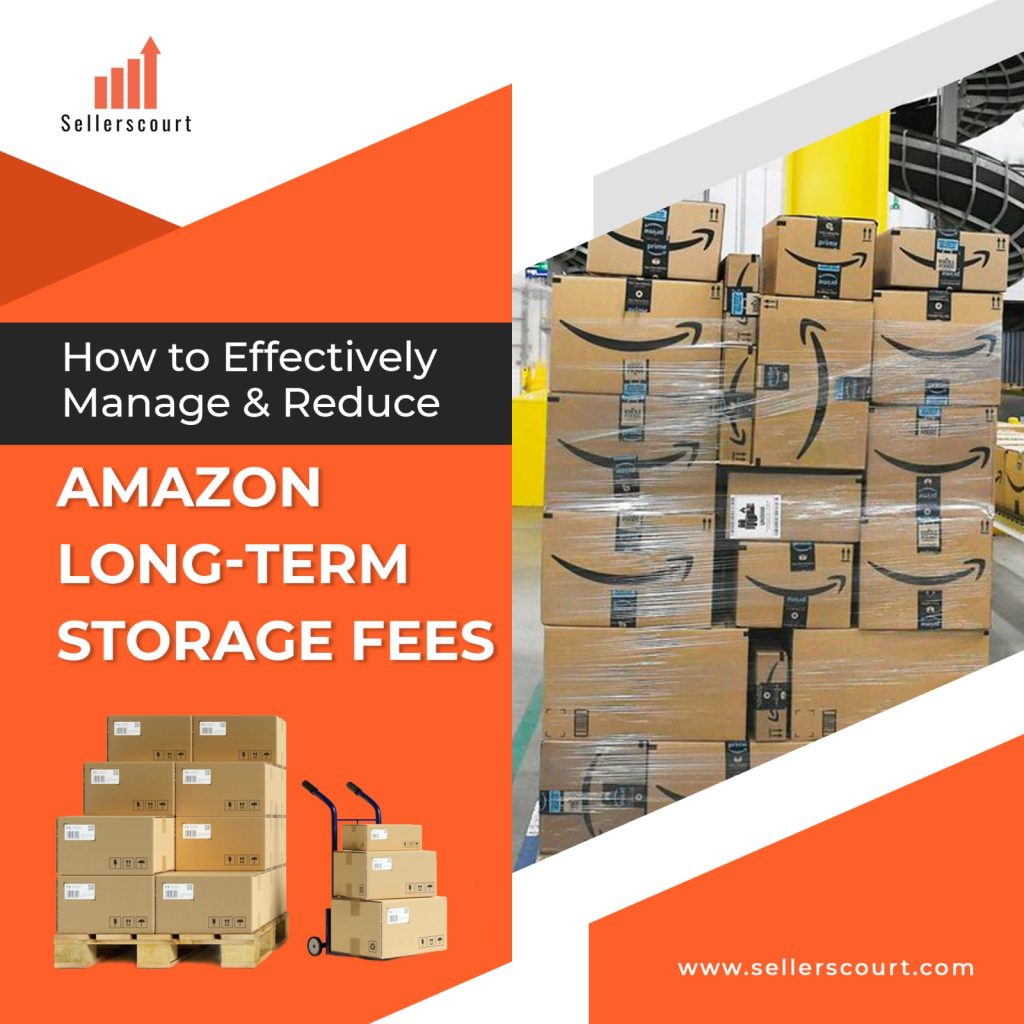
Introduction:
As an Amazon FBA seller, keeping track of inventory and managing storage fees is an essential part of your business. With Amazon’s long-term storage fees, this can become a significant expense if not managed effectively. These fees are charged on items that have been in Amazon’s fulfillment centers for an extended period, which can eat into your profit margins. In this blog post, we’ll discuss strategies and tips to help you effectively manage and reduce your Amazon long-term storage fees. As an Amazon agency with 45 years of combined experience and offices in London and New York, Sellerscourts is well-equipped to help you navigate this critical aspect of your Amazon business.
Understanding Amazon Long-Term Storage Fees:
Amazon long-term storage fees are charged on inventory that has been stored in Amazon fulfillment centers for more than 365 days. These fees are in addition to regular monthly storage fees and are assessed on a per-unit basis. Amazon charges these fees to encourage sellers to maintain a healthy inventory turnover, ensuring that products don’t take up valuable warehouse space for extended periods.
Strategies to Effectively Manage and Reduce Amazon Long-Term Storage Fees:
Keep Track of Your Inventory:
One of the most important steps in managing your Amazon storage fees is to keep a close eye on your inventory. Regularly monitor your inventory levels, sales velocity, and the age of your products in Amazon’s fulfillment centers. By doing so, you can make informed decisions about replenishing stock and avoid having excess inventory that can incur long-term storage fees.
Optimize Inventory Turnover:
A healthy inventory turnover rate is crucial for minimizing storage fees. To achieve this, analyze your sales data to identify slow-moving products and consider adjusting your pricing or marketing strategies to boost sales. Additionally, consider implementing inventory management tools or software to help you forecast demand more accurately, ensuring that you stock just the right amount of inventory to meet customer needs.
Create Sales Promotions and Discounts:
Offering promotions and discounts can help you move slow-selling products faster, thereby reducing the risk of incurring long-term storage fees. Experiment with different types of promotions, such as lightning deals or percentage discounts, to find the most effective strategy for your products.
Remove or Dispose of Excess Inventory:
If you have inventory that isn’t selling and is at risk of incurring long-term storage fees, consider removing or disposing of it. You can create a removal order through your Amazon Seller Central account to have the inventory returned to you, or you can choose to dispose of it. While this may result in a loss, it can be more cost-effective than paying long-term storage fees.
Consider Alternative Storage Solutions:
If you find that Amazon’s long-term storage fees are becoming too costly, you might want to explore alternative storage solutions. Third-party logistics providers (3PLs) often offer competitive storage rates and can help you store your inventory outside of Amazon’s fulfillment centers. By using a 3PL, you can still fulfill your orders through Amazon’s Multi-Channel Fulfillment service.
Plan for Seasonal Demand:
Seasonal demand fluctuations can impact your inventory levels and storage fees. Be proactive in planning for these changes by adjusting your inventory levels accordingly. For example, if you sell seasonal products, consider reducing your inventory levels during the off-season to minimize storage fees.
Use Amazon’s Inventory Performance Index (IPI):
Amazon’s Inventory Performance Index (IPI) is a useful tool for monitoring your inventory management performance. A higher IPI score indicates better inventory management and can help you avoid long-term storage fees. Monitor your IPI score regularly and use it as a benchmark to make improvements to your inventory management practices. By maintaining a high IPI score, you can also access additional benefits, such as reduced storage fees and increased storage limits.
Conclusion:
Effectively managing and reducing Amazon long-term storage fees is crucial for maintaining healthy profit margins in your FBA business. By implementing the strategies and tips mentioned above, you can minimize the impact of these fees on your bottom line. As an Amazon agency with 45 years of combined experience and offices in London and New York, Sellerscourts is well-equipped to help you navigate this critical aspect of your Amazon business.
